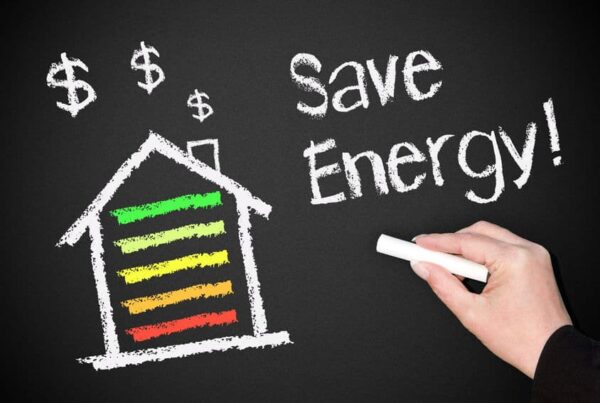The main reason that people consider a high efficiency furnace is savings. Savings on our energy bill typically translates to savings in our bank account. Who doesn’t want that? I know I do!
But how much savings can be expected by switching to a high efficiency furnace? A savings of at least 10% can be expected. This is because a standard furnace has anywhere between a 60% to a 80% AFUE rating while high efficiency furnaces start at 90%. Today’s standard models have a minimum rating of 80%. The older models can be as low as 60% efficient. So determining the amount of savings you can expect starts with knowing the efficiency of your current furnace.
How to Determine the Efficiency of Your Current Furnace
To determine the efficiency or AFUE rating of your current furnace, there are a couple of ways to figure it out.
1) The most convenient method is simply finding the AFUE rating on the furnace itself. Find the sticker on the furnace that contains the model and/or serial number. The AFUE rating should be located on this sticker as well. You will find “AFUE” next to the number or the “%” symbol. This number will reveal the AFUE rating of your furnace. It will also likely be listed in the furnace’s manual if you still have it.
2) A second option is to do some online research. If you locate the model number on the furnace but can’t find any information on the sticker that relates to the AFUE rating, just Google the model number and manufacturer. For example, if the manufacturer is Bryant, simply Google “Bryant furnace model 1234567”. Related information should come up in the search results and information such as the AFUE rating should be included.
Once you find out what the efficiency of your current furnace is, we can move on to some simple math to determine the gain in efficiency.
Calculate the Difference Between the Old Furnace and the New
To determine how much savings you can expect with a new high efficiency furnace, simply subtract the old furnace’s AFUE rating from the new. For example, if your current furnace has an efficiency rating of 70% and the new furnace has an efficiency rating of 95%, that equates to a difference of 25%.
Now that we have the difference in efficiency figured out, we can determine our savings. You will need to know how much was spent during the previous 12 months on your heating bill. Simply add up the last 12 months of your heating bill expenses. In most cases, only a portion of these months will have any expenses related to heating. These months will primarily be the Winter months and some Fall or Spring months.
Once you have this figure, you can multiply this number by the difference in efficiency that we came up with earlier. In our example, this number was 25%. So, let’s say that our total number for our 12 month period of heating expenses was $1000. I simply multiply this number by .25 and I will determine my projected savings. In this case, this would equate to a savings of about $250 a year. Not too bad! Over a 20 year period, which is the typical lifespan of a furnace, that would equate to a savings of around $5000!
Related: Should I Buy an 80% or 95% Efficiency Furnace?
Some Other Factors to Consider
Now that we’ve determined how much we can save by switching to a high efficiency furnace, we are pretty excited, right!? Absolutely!
Now let’s go over a couple a couple of factors that need to be mentioned to balance out the picture:
1) This is well-known and obvious to most of us, but I think it’s important to mention. A high efficiency furnace is going to cost more than a standard furnace in most cases. Therefore, in the big scheme of things, the savings experienced in the first year or two might not be noticed because of the upfront cost difference with the high efficiency model vs a standard model.
But, don’t worry! Furnaces are meant to last around 20 years on average, so the savings will come into effect fairly quickly and for a long period of time.
2) The second factor is the furnace installation process. Because high efficiency furnaces operate differently than standard furnaces, there can be extra installation costs when compared to a standard furnace. High efficiency furnaces use a sealed combustion system. This means that they require special piping to be run from the inside where the furnace is located to the outside environment. This allows the furnace to pull in outdoor air for its combustion purposes, and also to vent the exhaust outside. Because this process affects safety and is part of what enables the furnace to be highly efficient, there’s really no way to get around it. As you can see, this process can add more upfront costs to the installation of the high efficiency furnace. But, again, over a 20 year period, the savings produced will likely outweigh the extra upfront costs by far.
As you can see, determining the possible savings that can be realized by switching to a high efficiency furnace is fairly simple. It’s just a matter of determining the difference in efficiency and deducting that percentage from your last year of heating expenses, or whatever time period you would prefer to use.
I hope this information will help you in moving forward with your furnace buying experience!
What kind of savings are you projecting by switching? Have you already made the switch? What kind of savings have you experienced? Are there other factors that came into play in your situation?
Feel free to share and comment below. We’d love to hear from you!
Related: 4 Tips for Buying a New Furnace

